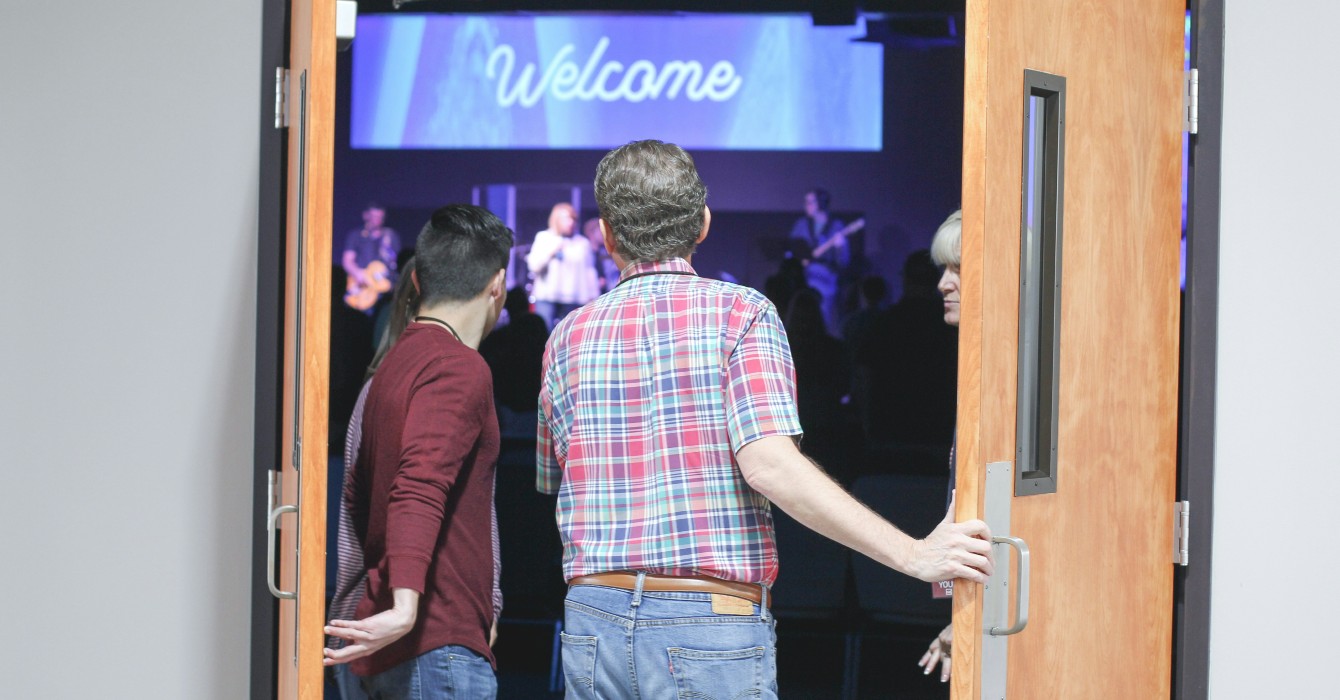When my neighbor invited me to visit her United Methodist church, I dismissed the invitation. At the time, I was a member elsewhere. But that wasn't the only reason. I knew my neighbor's church drew 150 for worship each Sunday, and I had tried smaller congregations before.
I had been open to attending a small Methodist church like my neighbor’s when I moved back to my hometown 10 years ago. My criteria were basic: Methodist or Cooperative Baptist, biblically grounded sermons, missions opportunities rooted in the local community, contemporary worship services. I also wanted to feel welcomed -- for someone to shake my hand and say, “We’re glad you’re here” or, “Let me know if you have any questions.” Or just, “Welcome!”
At that time, I visited eight churches, each one at least twice, and one for as long as eight months. Not one person beyond one pastor came up to me before or after a service to greet me. And even though I filled out a visitor’s card each time, not one person from any of the churches followed up with me.
I felt invisible. I was interested in joining a church, but maybe these churches weren’t interested in me.
You may know my kind. I have ambivalent memories of the Baptist church I grew up in, but I have no ambivalence about God. My playlist mixes Brandi Carlile and Ellie Holcomb. My weekly inspirations come from Chelsea Handler and the Rev. Amy Butler. My last reads are “Ms. Marvel” and Henri Nouwen’s “Love, Henri: Letters on the Spiritual Life.” I'm single.
Sometimes it seemed that churches didn't know what to do with me.
I ended up visiting a nondenominational church a 30-minute drive from my house. The nondenominational aspect and its overly produced music didn’t appeal to me. (Though I must admit I liked the idea of wearing jeans.)
But on my first visit, at least 10 greeters stood at the entrance and held the doors open. Everyone got a “Welcome! Good to see you.” Inside, there were more greeters scattered around and stationed at information tables and kiosks.
When I walked through the doors into the auditorium, another greeter handed me a bulletin, smiled and said, “Enjoy the service.”
I felt seen and welcomed. I joined a year later.
Over time, I became a small group leader and ministry leader, and manned an information desk before and after services.
The church enriched my life. I changed there. I found the courage to sing out loud. I got to know God better. I began to heal from the wounds of churches past.
But the church changed, too. Its membership swelled from 900 to over 12,000. People came and went. Ministries popped up and dropped off. Elders changed the church’s mission and vision. The sermons became repeats, some five times over. Pastors moved on, and new ones came on. I wondered: Would anybody even notice if I stopped coming?
Eventually, I had to take stock: Who did God call me to be? And where does God want me?
The desire to be rooted in and invested in my local community came to consume me. I needed to make a change, and to attend a church near home.
I thought about my neighbor’s invitation to visit the small United Methodist congregation five minutes from my house. I had nothing to lose by visiting the church, I told myself. The church could not make me feel any less welcome than others I had visited over the years. As I walked through its front doors, I said a quiet prayer: “God, just put me where you want me to be, and let me be open to wherever that is.”
A couple greeted me. As the man handed me a bulletin, he said, “Welcome! We’re glad you’re here.”
I walked into the sanctuary and sat down. A woman tapped me on the shoulder from behind and asked me my name. “It’s wonderful to meet you,” she said. “If you have any questions, let me know. We’re glad you’re here.”
I filled out a visitor’s card. The pastor emailed me within a few days. I went back the next week. A greeter introduced me to several women around my age and followed up that afternoon with an email.
I had never felt more welcomed. It was a bit surreal. I had found a church that actually felt like a church -- inviting, warm, open and neighborly.
Over the next several months, I came to understand why. The church is intentional in welcoming visitors.
At least four times in as many months, I heard a lay leader or the pastor there say something like, “You can tell a lot about a church by how it treats its visitors.” At least three times they encouraged us to invite at least one other person to a songfest or event.
The pastor peppers his sermons with what it means to be a neighbor, to those both outside the walls of the church and within.
There are also the small gestures that convey warmth.
The pastor let me borrow his copy of the Rev. Adam Hamilton’s “Revival” DVD series after only a handful of visits, and he has invited me to meet with him so I can learn more about the church and he can learn more about me (though I haven’t yet taken him up on the offer). A member gave me a tour of the church and talked me through the different Sunday school options. When none seemed to be the right fit for me, she encouraged me to start my own.
There’s the typical passing of the peace during services and the Wednesday dinners. But there are also luncheons after Sunday services once a month, and be assured, if you’re a visitor, you’ll have members eat with you, ask you questions and answer yours.
There’s a dedicated time during services for members to call out their announcements, prayer requests and joys; but there’s also a near-daily consolidated email from the church office with updated announcements, prayer requests and calls to action.
When Sunday attendance is a bit down, the congregation moves up to fill in the first few rows of pews, and the pastor moves a lectern down to stand level with us as he delivers the message.
At the end of each service, as we sing “A Closing Prayer” after the benediction, singers from the praise team walk up and down the rows shaking our hands or giving us hugs. And the pastor and at least one lay leader typically stand at the back to greet us again as we leave.
At a recent Bible study, several members of the congregation shared how they had ended up at the church and why they had stayed. They were of various ages. Single and married. But their stories all began like mine: they had visited numerous other churches, too, and no one seemed to notice. Once they landed at our church, they immediately felt that they had found a place where they could belong.
“Others were so welcoming to me when I came here,” one woman who is now a greeter told me. “I just want to pass it on.”
“Sometimes you want to go where everybody knows your name / And they’re always glad you came.” The pastor sang those lyrics from the “Cheers” theme song in a recent sermon. If there’s ever a place that should be that to people, he said, it’s the church.
People don’t join a congregation because of the children’s programs or the facilities or the ordained leadership, he said. They join because of how they’re treated by others.
I joined the church in September.












